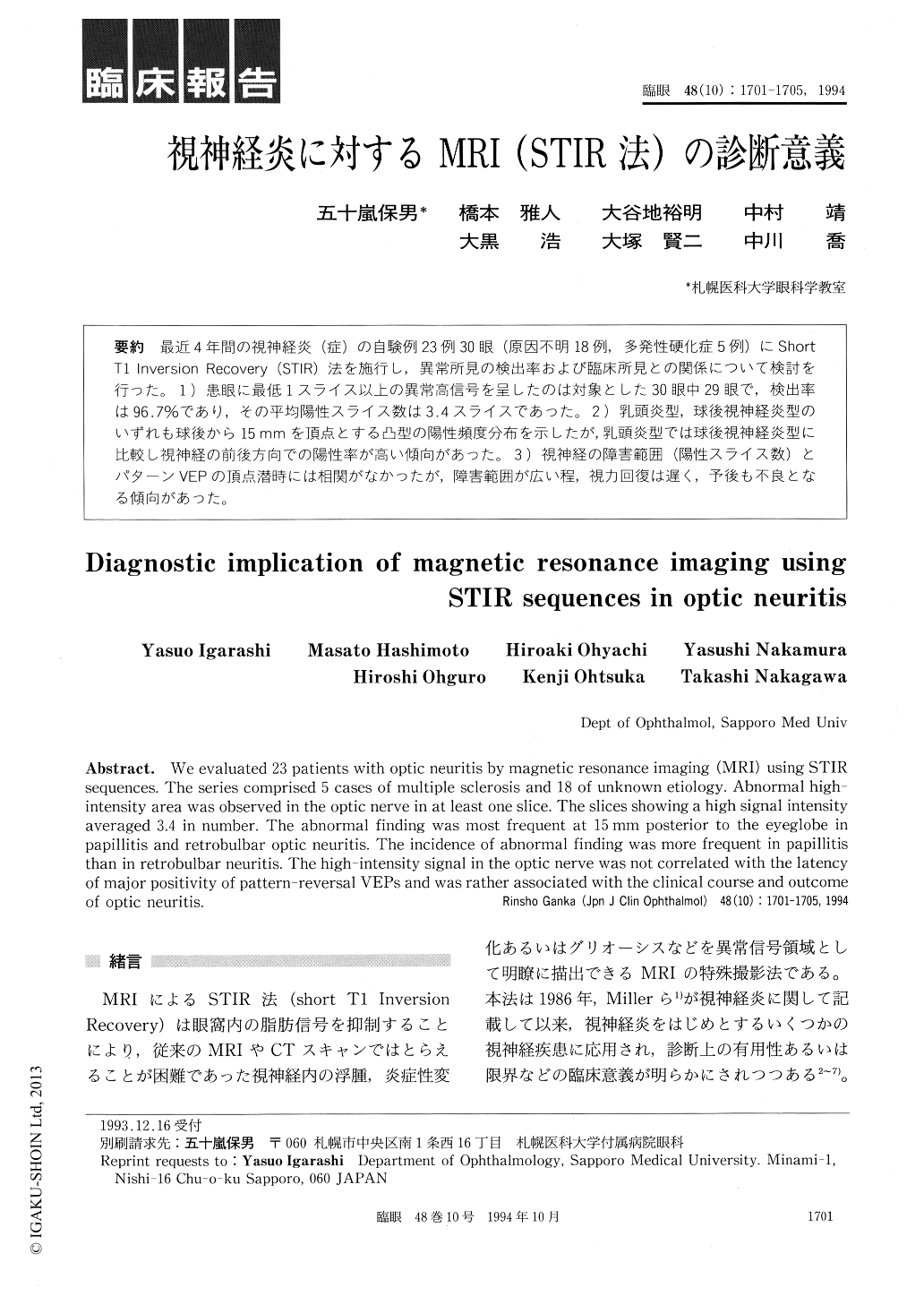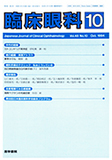Japanese
English
- 有料閲覧
- Abstract 文献概要
- 1ページ目 Look Inside
最近4年間の視神経炎(症)の自験例23例30眼(原因不明18例,多発性硬化症5例)にShortT1 Inversion Recovery (STIR)法を施行し,異常所見の検出率および臨床所見との関係について検討を行った。1)患眼に最低1スライス以上の異常高信号を呈したのは対象とした30眼中29眼で,検出率は96.7%であり,その平均陽性スライス数は3.4スライスであった。2)乳頭炎型,球後視神経炎型のいずれも球後から15mmを頂点とする凸型の陽性頻度分布を示したが,乳頭炎型では球後視神経炎型に比較し視神経の前後方向での陽性率が高い傾向があった。3)視神経の障害範囲(陽性スライス数)とパターンVEPの頂点潜時には相関がなかったが,障害範囲が広い程,視力回復は遅く,予後も不良となる傾向があった。
We evaluated 23 patients with optic neuritis by magnetic resonance imaging (MRI) using STIR sequences. The series comprised 5 cases of multiple sclerosis and 18 of unknown etiology. Abnormal high-intensity area was observed in the optic nerve in at least one slice. The slices showing a high signal intensity averaged 3.4 in number. The abnormal finding was most frequent at 15mm posterior to the eyeglobe in papillitis and retrobulbar optic neuritis. The incidence of abnormal finding was more frequent in papillitis than in retrobulbar neuritis. The high-intensity signal in the optic nerve was not correlated with the latency of major positivity of pattern-reversal VEPs and was rather associated with the clinical course and outcome of optic neuritis.

Copyright © 1994, Igaku-Shoin Ltd. All rights reserved.


